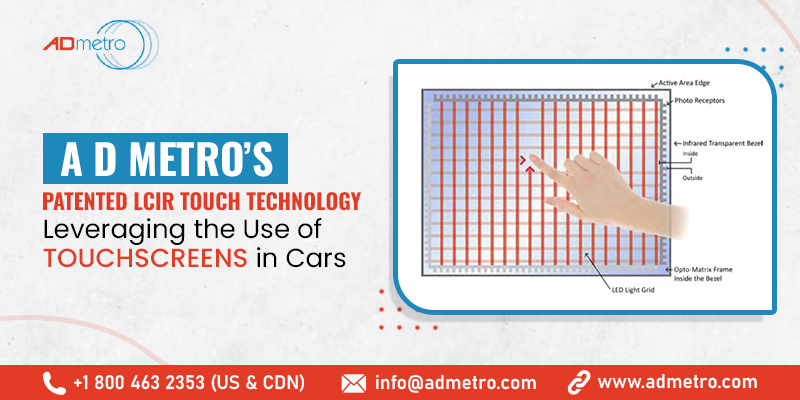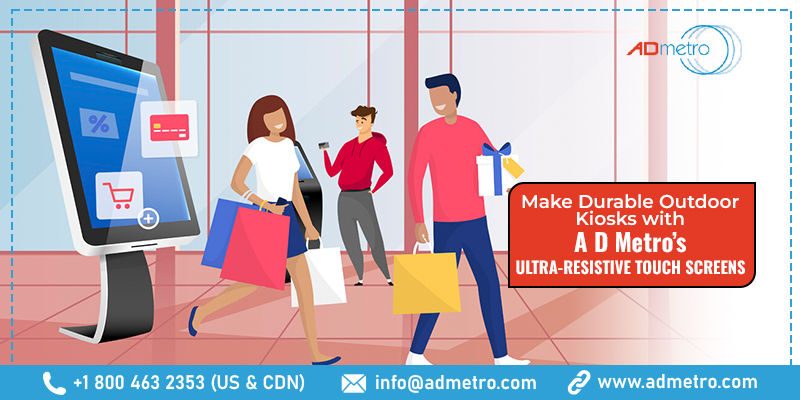With the growing demand for interactive touch applications, projected capacitive (PCAP) touchscreens have emerged as one of the top-selling touch technologies. Features like high optical clarity, light touch activation with smooth gestures (such as zoom, pinch and rotate), precision, and high-quality construction make PCAP touch technology the ideal fit for many applications. But what actually makes PCAP touchscreens offer such superior features?
It is the controller that gives an edge to PCAP over other touchscreen options. Controllers are the brain ushering outstanding performance of PCAP touchscreens. They help decide the functionality of applications in terms of touch inputs, noise immunity, water resistance, and thick cover lenses.
The industry leader for innovative touch solutions- A D Metro offers two types of PCAP controllers, both able to meet different off-the-shelf requirements.
- Standard PCAP Controller
- ARGON PCAP Controller
Read on to learn about these controllers in detail.
Standard PCAP Controllers:
Excellent solution for mid-sized sensors, A D Metro’s standard PCAP controllers come with touch panel kits offering economical solutions to original equipment manufacturers (OEMs) and system integrators.
Each touch panel kit offers a high-quality glass-on-glass sensor bundled with a compact controller board. The common controller board addresses a range of sensor sizes and formats, having popular 2 by 51-pin FPC flex tail interconnects. Moreover, for sensors having a 68-pin FPC flex tail interconnect, an adapter is provided in the kit. This allows greater flexibility during the product development cycle of an application. Since many standard-size screen sensors and formats are available as commercial off-the-shelf (COTS) solutions, the common control board can reduce the costs associated with the development of PCAP-based solutions as well as OEM Inventory.
However, the firmware in the standard PCAP controller must be programmed for the sensor size, orientation, and sensing parameters. These can be pre-programmed by A D Metro based on the specific needs of OEMs.
But if the priority is faster time-to-market, OEMs can opt for A D Metro’s patented ARGON PCAP controller. The ARGON is pre-programmed with firmware that adapts to any sensor and usage conditions, so touch parameters and conditions don’t need to be known or decided in advance.
ARGON PCAP Controllers:
ARGON is a smart controller that can automatically adapt to different sensor sizes and formats without requiring any tuning software for setup. This allows easy and swift configuration of PCAP touch sensors, making them suitable for usage in a variety of commercial and industrial applications.
During the automatic setup process, ARGON controllers probe the sensor size and intended sensor orientation. ARGON also automatically analyzes several other parameters such as noise environment and touch sensitivity for best performance.
Since no dedicated hardware drivers are required for configuration, the ARGON controller offers compatibility with any operating system that can be operated with a mouse. This way, it simplifies inventory for OEMs who want to use PCAP touch screens in their product offering with just one powerful controller able to manage all the sensor size requirements.
The ARGON controller is compatible with any PCAP sensor, having a 2 by 51-pin flex tail, generally available in sizes from 6” to 24”. ARGON is also suited to PCAP sensors having a 68-pin flex tail through an adaptor.
To Conclude:
While both ARGON and standard PCAP controllers are suitable for configuration in a variety of touch applications, ARGON becomes the preferred choice for OEMs who want to streamline their inventory and simplify field service not requiring specific firmware on standard PCAP controllers. Where standard PCAP controllers necessitate tuning using software to set orientation, the number of required touches, sensitivity, etc., A D Metro’s smart ARGON PCAP controllers eliminate these intricacies by automatically adapting to various sensor sizes, formats, and cover glasses.







